- Stan Yoshinobu
- http://www.inquirybasedlearning.org
- Professor
- PRODUCT
- http://www.inquirybasedlearning.org/product-workshops
- Cal Poly San Luis Obispo, University of Colorado Boulder
- Sandra Laursen
- http://www.colorado.edu/eer/people
- Senior research associate & director
- PRODUCT
- http://www.inquirybasedlearning.org/product-workshops
- University of Colorado Boulder
Public Discussion
Continue the discussion of this presentation on the Multiplex. Go to Multiplex


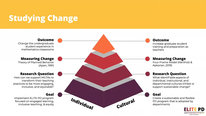
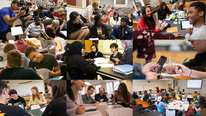
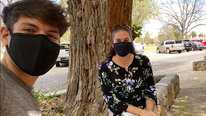
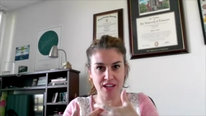
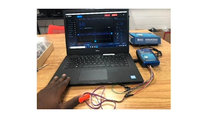
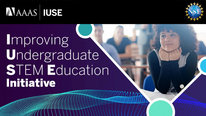
Jay Labov
Senior Advisor for Education and Communication (Retired)
Thank you for posting this video! It focuses on a critically important topic. I have several questions about your work that I also hope will catalyze additional questions and discussion during the coming week:
- Could you provide in this discussion stream some additional details about what participants actually do during the week of the professional development workshops? For example, do the workshops focus on a particular branch of math, such as calculus, or do the workshops ask participants to re-conceptualize how they want their students to think about math regardless of the specific subject matter?
- Please tell us more about the people who participate. Are they primarily focused on teaching general education courses, courses for math majors, pre-service teacher courses?
- Since much research has demonstrated that one-time workshops are largely ineffective in changing participant behavior over the long term, your addition of a year of follow-up seems critically important. What kinds of interactions does your program have with participants after the workshop has finished?
- Please provide some additional detail about how you measure IBL skills, knowledge, and intensity in the year(s) following the workshop. Are those data self-reported? Or do member of your teams observe the teaching of participants after they've completed the workshop?
Thank you!
Stan Yoshinobu
Professor
Thank you for the kind and thoughtful note! Here are some key points addressing your questions...
Sandra Laursen
Senior research associate & director
hi Jay -
a couple of notes to add to what Stan said.
Re what happens at the workshop: The workshops include 4 main strands of activities based on research literature and long observation of instructors' needs as they enter IBL teaching. Video lesson study of IBL classrooms is the backbone that enables people to form a mental model of an IBL classroom and see some choices about how to pull it off in their own setting. They see what students can do, how instructors might handle various situations, and can discuss what might look different in different scenarios. "Nuts and bolts" sessions cover the tactics and skills of IBL teaching, especially those that differ from lecture courses - how to plan and facilitate IBL lessons. "Literature to practice" sessions offer some reading from the education literature or para-literature to give people a conceptual foundation and something to go on besides personal experience as a basis for their choices. This material also helps them defend those choices to colleagues or students. Course planning time helps structure the work of planning an IBL course through a checklist of decisions to make and materials to gather or develop; people work alone or in small groups on their course, in a supported setting.
Through all of this the workshops model inquiry into teaching to give participants a learning experience that is parallel to (but not the same as! ) students' experience of learning mathematics through inquiry. Lots of conversation, peer to peer interaction (with workshop peers as well as facilitator peers), reflection time, and good camaraderie. Of course this is nice face to face, but as evaluators we were impressed with how well the model ported over to an online format last summer. A strength of this project (and indeed a deliberate element of it) has been to build capacity in faculty development for UG math education. The project has generated a crackerjack team of people who have very strong and portable facilitation skills, and they will continue to make an impact on the profession.
Re followup: as Stan says, there is a lively IBL community that predates this project by many years, into which we can plug people, through a MAA (prof soc) interest group and more informal, community-based efforts. The email mentoring list for the first year supports new IBLers in implementing their first IBL course, and we have evidence that this support structure is very helpful in solving practical problems and providing moral support through the challenges of trying anything for the first time (see Hayward & Laursen, 2018). The trick is to use the list for discussion and collaborative problem-solving, not just information-sharing, and some of the tactics for that are shared in the paper.
Re measures: For IBL capacity, we use self-report measures of knowledge, skills, beliefs & motivation around IBL, administered repeatedly pre-workshop, immediate post, and about 1.5 years later. As evaluators we've used these for a long time and know a lot about how they behave; interestingly they don't seem to suffer from social desirability bias too much (maybe they will someday, and then we can claim we have a real cultural change!). For IBL intensity, the self-report items focus on the extent to which instructors use specific teaching behaviors (e.g. students work in groups), and data from the email followup helps us triangulate these (see Hayward, Kogan & Laursen, 2016).
Observation is too expensive to use as the main evaluation method on this scale, but we have indeed gathered observation data to compare to the surveys. In general we find that they align fairly well -- that is, instructors can tell us what they do if we use fairly plain, behavioral language to ask them, and do not load it up with value judgments. We're writing that work up now and will present some of it at the ASCN meeting in June (see talks by Hayward and Weston).
Anya Goodman
Patricia Marsteller
Professor of Practice Emeritus
Thanks for this cool video. Since we have been working on bio math integration for a long time...How have you incorporated thing like bio and math people working together?
Have you used thins like case based learning? or social justice implications to grab student interest?
Stan Yoshinobu
Professor
Hi Patricia! Thank you for the note and questions. We do allow people who teach courses for Bio and Math, and that has been an area of focus for some of our attendees. We don't have specific content for this, but instead use a broad inquiry-based learning (IBL) approach, and encourage participants to apply the IBL practices to their courses.
Social justice and equity is one of the four pillars of IBL teaching. We are not promoting specific content, and that is a choice instructors can make to include social justice content. Instead we focus on equitable teaching practices that can be applied across all courses so that more courses support marginalized students.
Case-based learning shows up in some applied courses or courses for future teachers, usually labeled project-based learning. In subjects like pure math, the "case" shows up as a theorem or mathematical problem statement. Same idea, but packaged differently due to the nature of the subject.
Cheers!
Patricia Marsteller
Professor of Practice Emeritus
Thanks Stan
However there are a number of cases out there that incorporate math. For example: Here's a few from the National Center for Case Study Teaching in Science. There's also a few Research Coordination Networks that incoporate big data and math. Also lots of bioinformatics. What I like about this and things like GIS analysis of health disparities and other SJ issues is that they really grab students interest.
Love to hear more about the content of your faculty projects!
Markov vs. MarkovIn this directed case study, students build a Markov chain probability model of marriage and divorce using statistics - the chance of divorcing in ...
Mathematically Modeling Aircraft Fuel ConsumptionThe problem studied in this case deals with the identification of potential ways to lower fuel consumption in a 737 aircraft. Students are presente ...
Mathematics in ConservationThis interrupted case study teaches probability theory and transmission genetics through their application to the conservation of the endangered Fl ...
Rated MPG for ConfusionThis case study follows a family’s dilemma about how to save money on gasoline. Should they keep their SUV and trade in their Corolla for a h ...
The Case of the Two-Faced DataThis case study on Simpson's paradox is a fictionalized account of a famous case of alleged gender discrimination at University of California at Be ...
The Concept of SlopeThis directed case study is designed for an intermediate algebra course, appropriate for high school mathematics and lower division college mathema ...
Stan Yoshinobu
Sandra Laursen
Senior research associate & director
thanks, Patricia. We certainly have instructors come to workshops who are interested in data science courses, as well as gen ed kinds of courses, and it's great to know about these materials.
Stan Yoshinobu
Professor
Agree with what Sandra said, thank you Patricia for sharing these resources. Good to know about them and will let folks know about them.
Judith Dilts
Retired Associate Dean, College of Science and Mathematics
Great idea for increasing the use of IBL in math classrooms. Do your participants generally come by themselves or as a cohort from an institution? I ask because faculty are more likely to change and have the changes persist if there are others who are involved in the change. Also, if they come as a cohort does an administrator come with to participate in the workshop? Again, change is likely to be sustained if there is "by-in" from the institution.
Thanks for sharing!!
Judy
Sandra Laursen
Senior research associate & director
We get some folks who come in teams but we do not require it. And we certainly see that someone's good experience one year encourages colleagues to come the next year. Certainly having a group of colleagues in one's own department is supportive, but we don't want a team requirement to be a barrier that prevents instructors from joining, and we do a lot of work to build a larger network of support in the broader IBL community. Everyone starts this journey at a different place! In future work we hope to do more deliberate building of the leadership skills to initiate larger-scale reforms in departments or in large, coordinated courses.
Judith Dilts
Anya Goodman
Thank you for sharing your professional development program and assessment approach, Stan and Sandra! I have been working with the distributed professional development community for genomics/biology education (GEP) and I am excited to see the parallels to your community! We also see the importance of mentoring new faculty, especially in the distributed community where faculty members trying something new, may not have local support on their campus. We also put a lot of effort into engagement and discussion (rather than information "pushing" through communication channels).
I am fascinated by the assessment model - I have not thought of capacity and intensity as a way to measure the impact of PD. Sandra, I am looking forward to tracking down the references you mentioned!
One of the issues we are trying to solve for the longevity of our PD community is sustainability in the long term. Have you been able to support the on-ramp workshops via grants for all these years? Do you charge participants (or their institutions) fees to maintain centralized support? Have you found other mechanisms of supporting your work?
Sandra Laursen
Senior research associate & director
thanks, Anya. Re measurement - for more info also see the resources suggested in my reply to Mary Pilgrim, below. Our colleague Tim Archie is leading this analysis and generating some exciting results!
Mary Pilgrim
Great video, Stan! I am also curious about Judith's question above. I ask because I'm curious if you are looking at change at the department level as well as the individual level. In our project we are also using the Theory of Planned Behavior to understand change at the individual level, but then also examining change at the department level through the lens of the 4 Frames. It seems like we should talk sometime; I would love to talk more about how you are examining instructional change!
Stan Yoshinobu
Sandra Laursen
Senior research associate & director
hi Mary, department-level change is not an explicit goal of these workshops - we don't expect participants to take on everything at once - so we haven't tried to measure change there. There is certainly a good bit of discussion of these challenges and opportunities at workshops, and certainly there are folks who get jazzed up, bring other colleagues on board and get broader changes started. As you know, in math those course coordinators in calculus and pre-calc are crucial people, and we see an increasing number of them coming to workshops.
We do see some trends that participants' perception of departmental norms are more accepting of IBL than they were a decade ago - which I ascribe to the broader cultural awareness and action around active learning. We also do see that some structural features, such as class size and course coordination, influence individuals' implementation of IBL: evidence that these systems are all interconnected and no single lever of change is enough to fix it all.
Finally, an explicit part of this project has been capacity-building to develop a strong team of faculty developers who will continue to work in the discipline. We are really proud of all the people who have participated in this work as workshop leaders and we expect they will continue to have an outsized effect on the profession for many years.
Have a look at the poster by Archie et al. (2020) on our group's website, www.colorado.edu/eer (easily found from the Publications tab), to learn more about our measures and results so far. We gave a talk at JMM this year and that video is on the website too (Archie et al. 2021). We'll have a paper coming out in the RUME 2021 collection soon. Thanks for your interest!
Patricia Marsteller
Stan Yoshinobu
Mary Pilgrim
Awesome! Thanks! I look forward to reading about it more in the RUME 2021 collection!
Rick Moog
Thanks for sharing this information about your project. As a strong proponent of inquiry instruction, it is great to know about other efforts at transforming the way that math and science are taught (and learned)! I would be interested in learning about the ways in which IBL and POGIL (Process Oriented Guided Inquiry Learning, www.POGIL.org ) are similar and different - and of any possible synergies between our organizations. For example, the four pillars of IBL have many similarities to the foundational principles of POGIL!
Rick
Stan Yoshinobu
Professor
Thanks Rick! Yes, we feel the same that POGIL and IBL are in the same family of ideas. We provide a space for a "big tent" IBL approach, and leave it to participants to make specific choices. A few participants have also been to POGIL workshops and they have blended or incorporated strategies useful to their specific needs. Our PD is not tied to curricula, and instead we help faculty adapt whatever they have or are given/assigned to promote student inquiry.
Overall we prefer to promote the "big tent" idea and welcome all forms of inquiry and active learning. We can learn from one another, and a central point is what specific instructors need to solve or manage the specific challenges they face at their institution. Not that there aren't meaningful differences, it's just they seem to be secondary to moving from passive to some form of active, engaged, equitable teaching and learning.
Suzanne Ruder
Thanks for the information about your project! Having taught using IBL (POGIL specifically) for over 15 years, and run various PD workshops on this topic, I can attest to the importance of a strong community to share ideas. Often new implementers are the only ones in their department to be using IBL, resulting in pushback from students (why are you not lecturing). Having a community to support your efforts is super helpful. I think it would be great to connect the two communities in some way. At workshops we are often asked if we know anyone teaching using IBL in XXX area. Connecting the two projects in some way would grow the community of inquiry from both perspectives.
Another thing we have done in the ELIPSS project at our workshops, is to complete a rubric (teamwork or interpersonal communication) while workshop participants are actively engaged in an activity. We hand back the completed rubrics, like we would do with our students, which had lead to very rich discussions on active learning.
Patricia Marsteller
Professor of Practice Emeritus
I just love big tent approaches....there are many ways to do cases and projects and one has to find what works for the students, the instructor and the setting. One size does not fit all